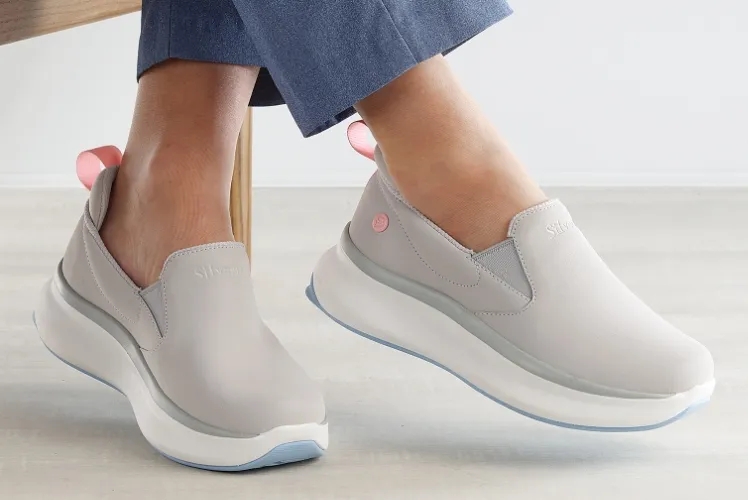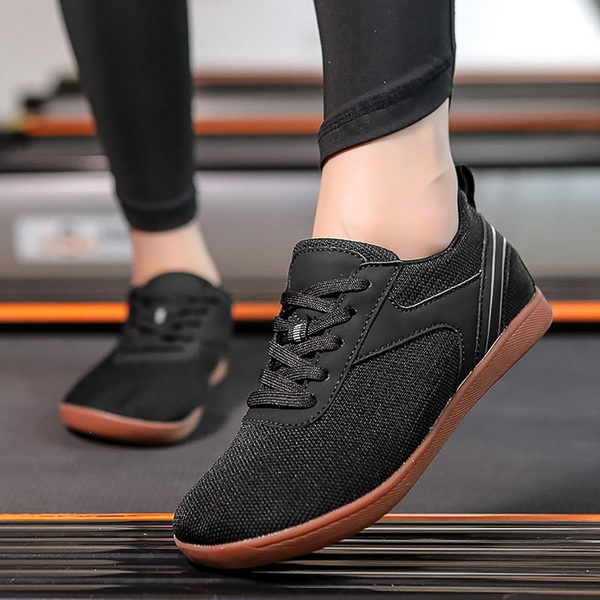Content Menu
● Understanding Shoe Widths
● The Science Behind the Fit
● Width Differences Explained
● Why Does This Matter?
● Variability Across Brands
● The Impact of Shoe Materials on Fit
● Practical Tips for Finding the Right Fit
● The Role of Footwear in Health
● Conclusion
● FAQ
>> 1. What is the main difference between men's and women's shoe sizes?
>> 2. How do I convert men's shoe sizes to women's?
>> 3. Are there any unisex shoe options available?
>> 4. What should I do if my feet are different sizes?
>> 5. Why is it important to consider both length and width when buying shoes?
When it comes to footwear, one of the most frequently asked questions is whether men's shoes are wider than women's. This inquiry is not only relevant for shoppers but also crucial for understanding how shoe designs cater to different foot shapes and sizes. In this article, we will explore the differences between men's and women's shoes, focusing on width, fit, and other essential factors that influence comfort and performance.

Understanding Shoe Widths
Shoe Width Categories
Shoe widths are categorized using letters that represent different widths for both men and women. Here's a general breakdown:
- Men's Widths:
- C: Narrow width
- D: Standard (medium) width
- E: Wide width
- EE: Extra wide width
- EEEE: Ultra-wide width
- Women's Widths:
- A: Narrow width
- B: Standard (medium) width
- C/D: Wide width
- E: Extra wide width
As a rule of thumb, men's shoes are typically designed to be wider than women's shoes of the same length. For instance, a men's shoe in size D (medium) is generally equivalent to a women's shoe in size C/D (wide) in terms of width.
The Science Behind the Fit
Foot Anatomy Differences
The anatomical differences between male and female feet are significant. Men's feet are generally longer and wider than women's feet. Research indicates that men have a wider forefoot and heel compared to women, whose feet tend to be narrower at the heel but wider at the forefoot. This difference is attributed to various factors including bone structure, muscle mass distribution, and overall body composition.
- Average Measurements:
- Men's feet typically measure around 10.75 inches (27.3 cm) in length for a size 10.
- Women's feet average about 10.18 inches (25.9 cm) in length for a size 10.
These measurements illustrate that while both genders may wear similar sizes, the actual fit can vary dramatically due to width differences.
Width Differences Explained
General Width Comparison
In general, men's shoes are about half an inch wider than women's shoes when comparing equivalent sizes. Here's a comparative look at how widths differ:
| Shoe Size | Men's Width (D) | Women's Width (B) |
| 8 | 3.6 inches | 3.2 inches |
| 9 | 3.9 inches | 3.5 inches |
| 10 | 4.0 inches | 3.8 inches |
| 11 | 4.1 inches | 3.95 inches |
From this table, it's clear that men's shoes are designed with a broader fit in mind.
Why Does This Matter?
Choosing the right shoe size and width is crucial for comfort and foot health. Wearing shoes that are too narrow can lead to various foot problems such as bunions, calluses, and even more severe issues like plantar fasciitis.
- Comfort: A shoe that fits well allows you to walk or run without discomfort.
- Performance: Properly fitting shoes enhance athletic performance by providing better support.
- Injury Prevention: Well-fitted shoes reduce the risk of injuries associated with improper footwear.
Variability Across Brands
Brand Differences
It's important to note that not all brands adhere strictly to these width designations. Some brands may offer shoes that deviate from standard sizing conventions, which can lead to confusion when shopping for footwear.
- Unisex Options: Many brands now offer unisex shoe models that aim to accommodate both men's and women's foot shapes without significant differences in fit.
- Specialized Brands: Companies like Ryka focus on women's athletic footwear specifically designed for female foot anatomy, which can provide better comfort for women who require more space in certain areas.

The Impact of Shoe Materials on Fit
The materials used in shoe construction also play a significant role in how shoes fit and feel on your feet. Different materials offer varying levels of flexibility, breathability, and support.
Common Shoe Materials
1. Leather: Known for its durability and classic appearance, leather molds to the shape of your foot over time but can be less breathable.
2. Synthetic Materials: Often lighter than leather, synthetic materials can provide breathability but may lack the same level of support.
3. Textiles: Shoes made from textile materials like cotton or polyester are breathable but may not provide adequate structure or support.
4. Rubber: Commonly used in soles for grip and durability; rubber can make shoes heavier but provides excellent traction.
5. Foam: Used primarily in cushioning layers, foam provides shock absorption but can retain heat and moisture.
Understanding these materials helps consumers make informed choices about which types of shoes will best suit their needs based on activity level and foot shape.
Practical Tips for Finding the Right Fit
1. Measure Your Feet: Always measure both feet as one may be larger than the other.
2. Try Before You Buy: Whenever possible, try on shoes before purchasing to ensure they fit comfortably.
3. Consider Width Options: If you have wide or narrow feet, seek out brands that offer specific widths beyond the standard options.
4. Look at Size Charts: Consult brand-specific size charts since sizing can vary significantly across manufacturers.
5. Don't Hesitate to Cross Over: If you find a style you love in the opposite gender's section that fits well, don't be afraid to try it out!
The Role of Footwear in Health
The choice of footwear extends beyond mere aesthetics or comfort; it significantly impacts overall health and posture as well.
Foot Health Considerations
Poorly fitting shoes can lead to several health issues:
- Hammertoe: A condition where one or more toes bend abnormally due to tight-fitting shoes.
- Bunions: Painful bumps that develop at the base of the big toe joint due to pressure from narrow shoes.
- Plantar Fasciitis: Inflammation of the tissue along the bottom of the foot caused by inadequate arch support.
Choosing supportive footwear helps maintain proper alignment and reduces stress on muscles and joints throughout your body.
Conclusion
In summary, men's shoes are generally wider than women's due to anatomical differences between male and female feet. Understanding these distinctions is essential for anyone looking to find comfortable footwear that meets their needs. Whether you're shopping for running shoes or everyday wear, always consider both length and width when selecting your next pair of shoes.

FAQ
1. What is the main difference between men's and women's shoe sizes?
The primary difference lies in both length and width; men's sizes are typically longer and wider than women's sizes.
2. How do I convert men's shoe sizes to women's?
To convert from men's sizes to women's sizes, add approximately 1.5 sizes (e.g., a men's size 8 is roughly equivalent to a women's size 9.5).
3. Are there any unisex shoe options available?
Yes, many brands now offer unisex shoes designed to fit a variety of foot shapes without significant differences in fit.
4. What should I do if my feet are different sizes?
If one foot is larger than the other, always go with the larger size when purchasing shoes.
5. Why is it important to consider both length and width when buying shoes?
Considering both dimensions ensures a proper fit, which enhances comfort and reduces the risk of foot-related problems.

















